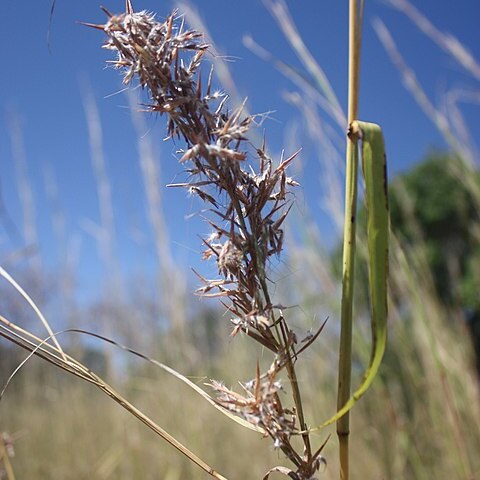A grass. It forms loose tufts. It has underground stems or rhizomes. It keeps growing from year to year. It grows 3 m high. The leaves have a lemon like smell when crushed.
Tall perennial up to 2·5 m. high
Dense narrow panicles.
Glaucous leaves

